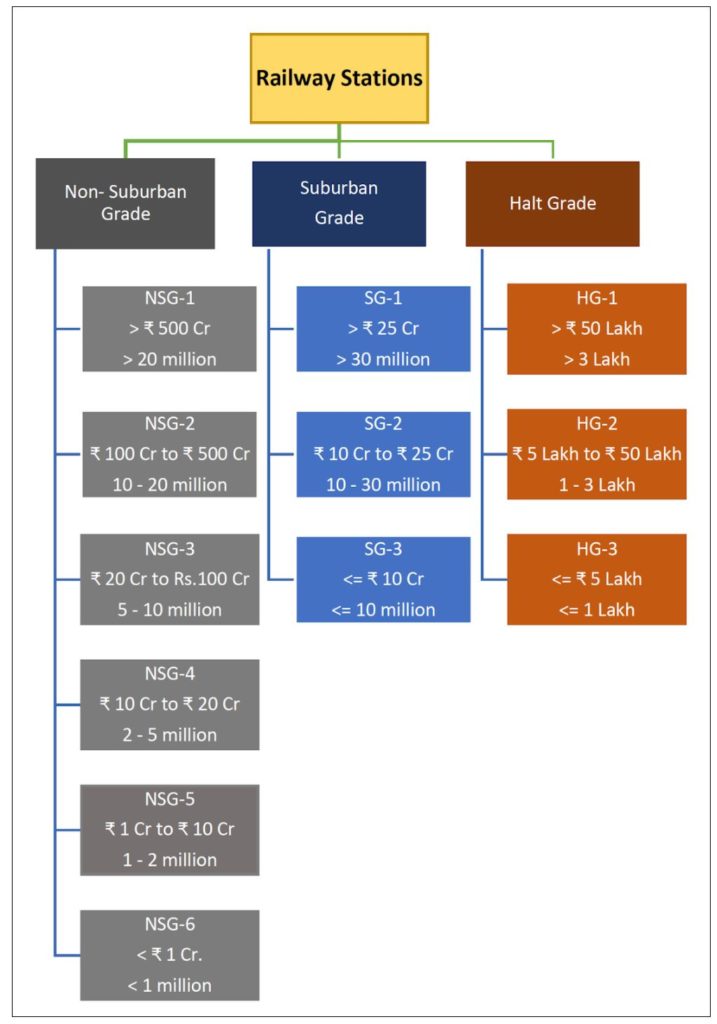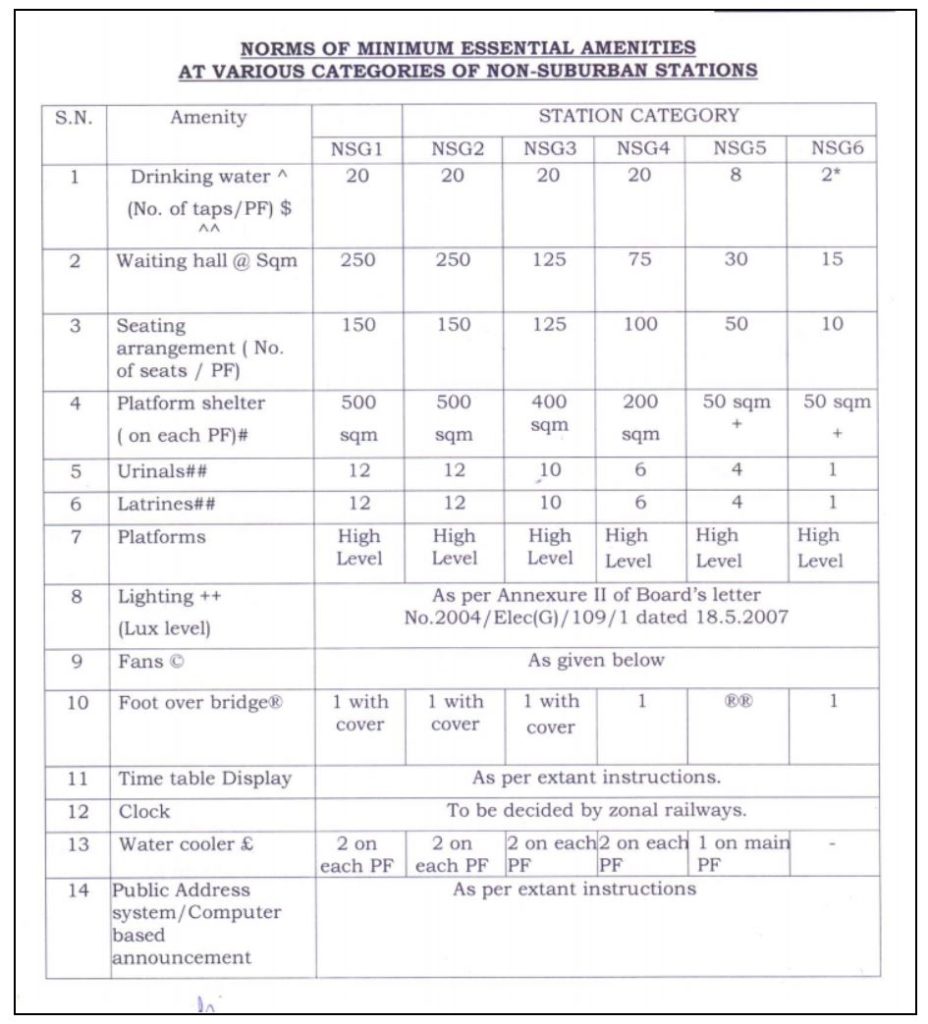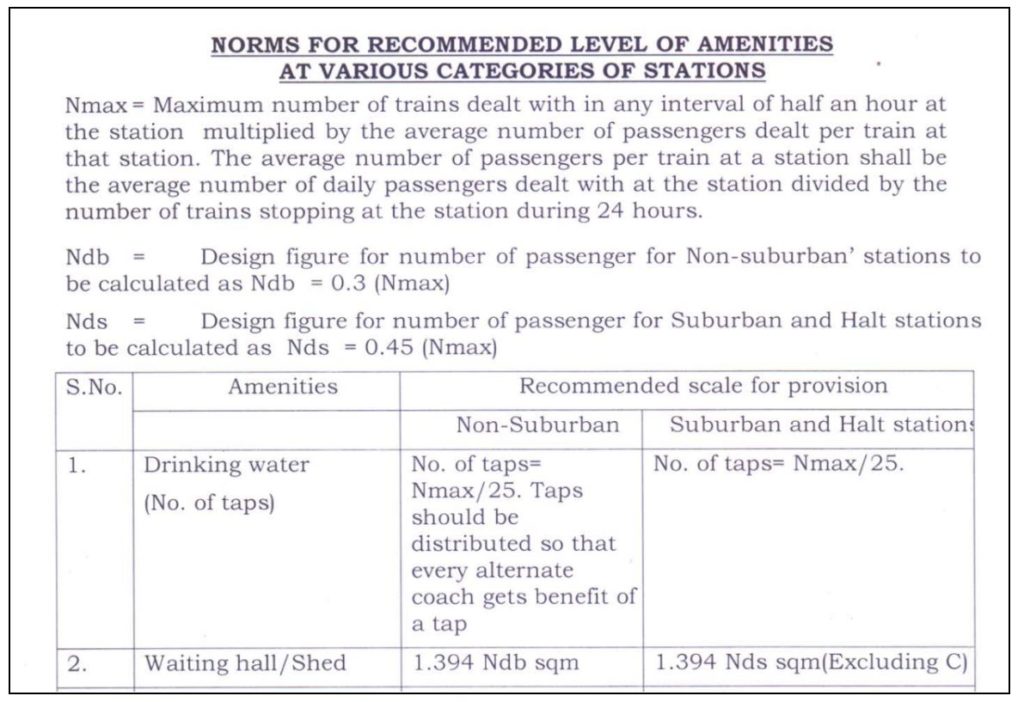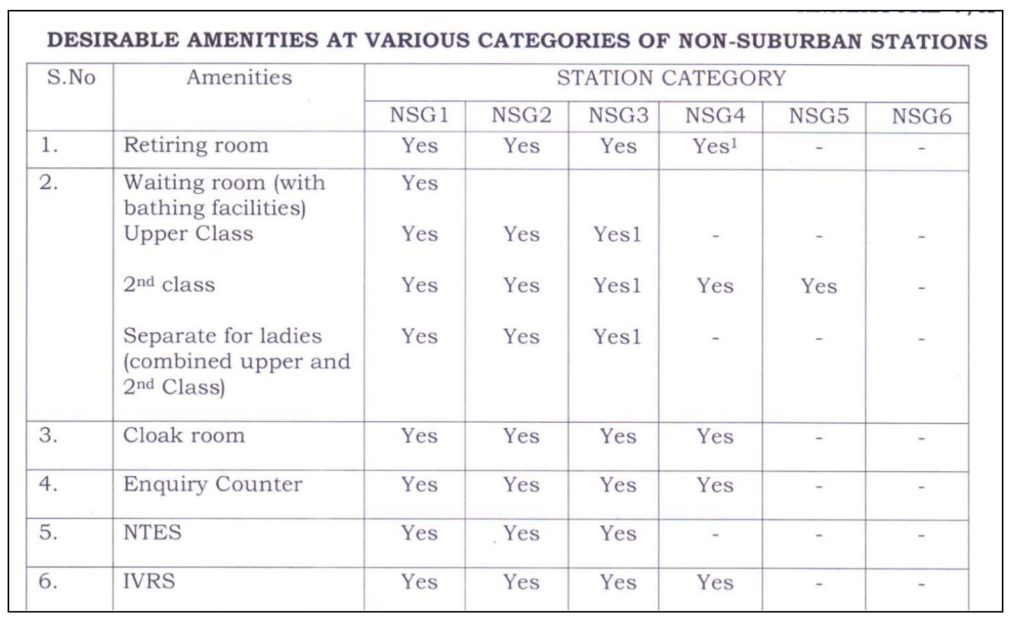The Indian Railways issued new guidelines in 2018 specifying the type of amenities to be provided at various stations based on their category. The stations have been categorized based on passenger volume & earnings while the amenities to be provided have been classified as minimum essential, recommended & desired. Here is an explainer.
The Indian Railways carries over 2.3 crore passengers and over 30 lakh tonnes of freight every day. It is a system that consists of 66,030 route km of track spanning the country. In order to cater to the needs of such a huge number of passengers and to keep up with their aspirations and expectations, and considering the advancement in science and technology, the Indian Railways provides various facilities, both in trains and at the railway stations.
Since railway stations are the first point of contact between passengers and Railways, adequacy, quality, and maintenance of facilities is given due importance. It was in 1952 that the Railways issued a set of guidelines with regard to passenger amenities for the first time. Comprehensive instructions on the provision of passenger amenities in railway stations were notified in 2018, the latest such guidelines in this regard.
Railway stations have been classified on the basis of Passenger Volume and Earnings
All railway stations in the country have been broadly classified into three categories in order to prioritize the provisioning of passenger amenities. These are Suburban stations, Non-Suburban stations, and Halt stations. This categorization is done on the basis of passenger earnings from both reserved and unreserved passengers, and the volume of passengers handled at stations and is reviewed every five years. Other parameters that determine the availability of amenities are the special characteristics of the station such as those with tourist/religious importance, and availability of funds.
Suburban stations are further categorized into 3- SG-1, SG-2, and SG-3. Non-Suburban stations are categorized into 6- NSG-1, NSG-2, NSG-3, NSG-4, NSG-5, and NSG-6. Likewise, Halt stations are categorized into HG-1, HG-2, and HG-3. The criteria of proposed earnings and proposed outward passengers handled for classification is summarized in the following flowchart.

About half the railway stations in India fall under Non-Suburban grade category
There are a total of 8738 railway stations that have been classified as per the above criteria. 5,905 stations fall under the Non-Suburban grade category of which 4238 stations (nearly 49% of the total) are NSG-6 type stations and each of these stations has passenger earnings up to Rs. 1 crore. Under the category of Suburban grade, there are more than 500 stations. The remaining around 2300 stations are of Halt Grade. Details are in the following table.
Passenger amenities to be provided have been classified into three
Passenger amenities have been classified into three categories- Minimum Essential Amenities (MEA), Recommended Amenities, and Desirable Amenities. It is mandatory that a list of MEA required, the actual available amenities and other amenities available in a particular station be displayed in the Station Master/Manager’s room.
MEA consists of the certain minimum amenities that must be provided in each category of stations. These include drinking water arrangements, waiting hall/shed, seating arrangements, platforms, shelters/shady trees, lighting, foot over bridge, and dustbins in HG stations. Clocks and timetable display is not mandatory in HG-2 and HG-3 stations. In addition to all these requirements, urinals, latrines, electronic train indicator boards, and computer-based announcements are mandatory in SG stations. Water coolers should be available in SG-1 and SG-2 stations. Booking facilities, standardized signage, and parking and circulatory area with lights are required in NSG stations. Electronic train indicator boards are not mandatory in NSG-4, NSG-5, and NSG-6 while signage is not mandatory in NSG-5 and NSG-6. The guidelines have also laid down the requirement for the number of taps, area of the hall, and other specifications with regards to the mandatory amenities in each category and subcategory of stations.

Recommended amenities are to ensure that the scale of provision of amenities is in accordance with the passenger traffic
Sometimes, the amenities under the MEA list may not be on par with the passenger load at the stations, and hence augmentation of these amenities may be required, known as ‘Recommended Amenities’. The specifications given under MEA are altered as per the recommended scale of provision calculated by taking into consideration, the average number of passengers and the number of trains dealt with in any interval of half an hour at the station. For instance, as per norms of MEA, the number of drinking water taps in each of NSG-1, NSG-2, NSG-3, and NSG-4, is 20, 8 in NSG-5, and 2 in NSG-6. However, under recommended amenities, the number of taps is calculated on the basis of the maximum number of passengers that may be in the station in a duration of half-hour. Additional amenities that are part of the recommended list include bathrooms, IVRS, coach indication boards, nursing cubicles, insect catchers, and mobile charging points. The decision in most cases lies with the Zonal Railways.

Desired amenities are to improve passenger satisfaction
Desired amenities are those which, if available, will help in increasing passenger satisfaction. The quantum of these amenities would depend upon the category of the station. Retiring rooms, waiting rooms for the upper class and 2nd class, bookstalls, and other stalls, water vending machines, escalators and travellators, catering stalls, cyber cafes, ATMs, Automatic Vending Machines, AC VIP Lounge, CCTV, pre-paid taxi service, Wi-Fi, bus type shelter, and wheelchair ramps are the examples of desirable amenities. Just like in other cases, the majority of these amenities are approved for NSG stations, and least for halt stations.

Zonal Railways must conduct survey of available amenities
The Zonal Railways has to carry out a survey of available amenities at each station under it, based on which the list of amenities – essential, recommended, and desirable, is prepared for each station. The master plan of each station should have the list of amenities required. It is part of the ‘Divisional Action plans’ as well the ‘General Action Plan’. Priority is given to the higher category stations and low-cost amenities should be taken up on priority.
Special amenities are provided to persons with disabilities
As per the existing guidelines, special amenities are also to be provided for people with disabilities or ‘Divyangs’ to provide better accessibility. The following are the short-term facilities that have to be provided at all stations:
- Standard ramp with railing for barrier-free entry.
- Earmarking at least two parking lots.
- Non-slippery walkway from the parking lot to building.
- Signages of appropriate visibility.
- At least one toilet (on the ground floor).
- At least one drinking water tap suitable for use by differently-abled persons.
- ‘May I help you’ Booth
- Provision of the facility for inter-platform transfer.
- Engraving on edges of the platform
Besides providing such amenities, it is also necessary that these are well-maintained and functional throughout the day. Maintenance staff will have to carry out repairs as soon as the station master informs them. Constant monitoring and ensuring cleanliness and hygiene is also a must.
Railways has taken measures to ensure cleanliness of stations
To ensure the cleanliness of stations, Railways should spread awareness about the need to keep station premises clean. Those who are found littering, spitting, or defecating in inappropriate places on the railway premises should be penalized. Furthermore, ‘Swachh Rail, Swachh Bharat’ was launched in 2014 with the objective to enroute the cleaning of trains. Few other government measures are ranking of A1 and A classes of stations on a regular periodic basis, setting up waste segregation and recycling centres , and the Clean Train Stations scheme.
Underutilization of funds and increase in complaints observed in the Standing Committee report
It is mandatory & important that the Indian Railways provide certain basic facilities for the passengers such as safe drinking water, clean toilets, proper lighting, etc. at the stations. These also are maintained properly ensuring cleanliness and hygiene. However, a recent standing committee report highlighted the underutilization of funds by the railways on passenger amenities. It was also observed that there was a steep increase in the number of zone-wise complaints about passenger amenities in the last few years.
Featured Image: Minimum Essential Amenities at Railway Stations


